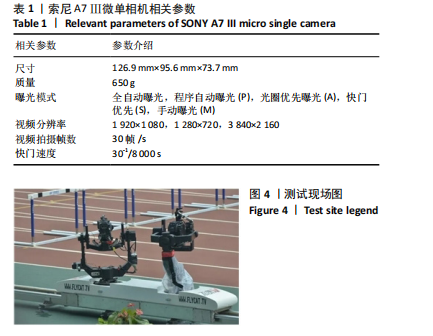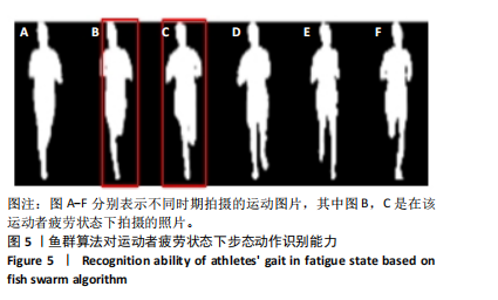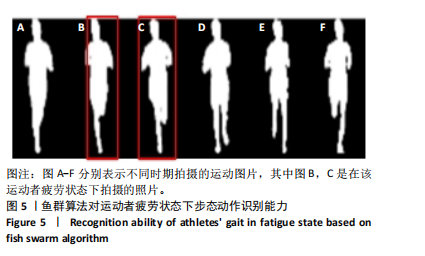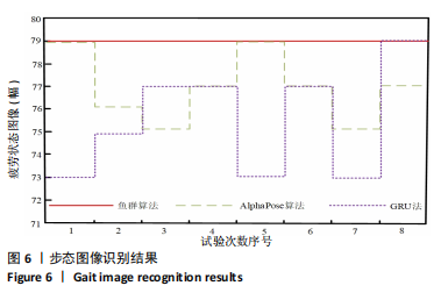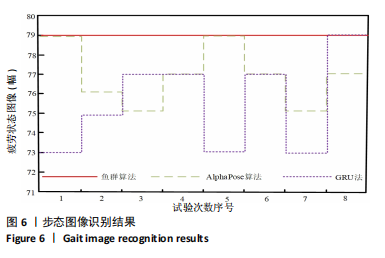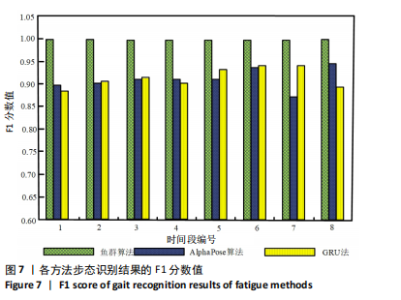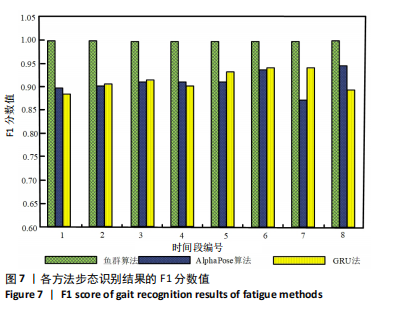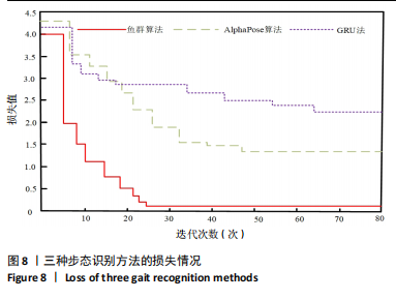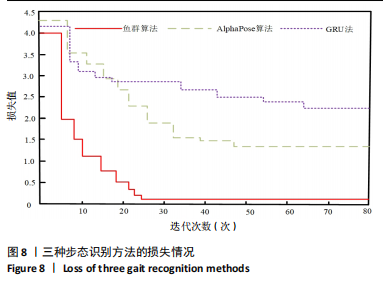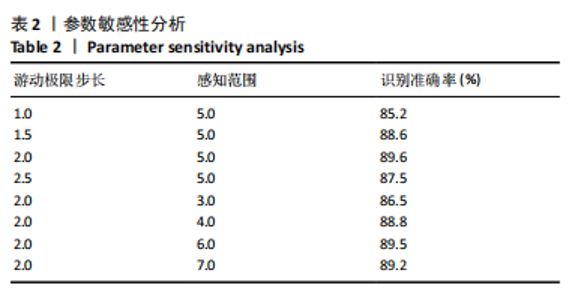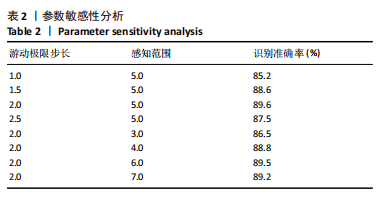[1] TANG YM, WANG YH, FENG XY, et al. Diagnostic value of a vision-based intelligent gait analyzer in screening for gait abnormalities. Gait Posture. 2022;91:205-211.
[2] 刘今越,李慧宇,贾晓辉,等.基于人体模型约束的步态动态识别方法[J].计算机应用,2023,43(3):972-977.
[3] 高经纬,马超,苏鸿,等.基于改进机器学习算法的步态识别与预测研究[J].生物医学工程学杂志,2022,39(1):103-111.
[4] 汪成亮,刘艺锣.基于震动信号的异常步态识别[J].电子学报, 2023,51(8):2088-2097.
[5] WANG L .Simulation of athlete gait recognition based on spectral features and machine learning. J Intell Fuzzy Syst: Appl Eng Technol. 2021;40(4):7459-7470.
[6] LI X, XUE C, GU X. [Retracted] Athlete Gait Feature Recognition Method Based on Multisource Sensing Information. Secur Commun Netw. 2022; 1:2857465.
[7] CHOI Y, NAPOLEAN Y, VAN GEMERT JC. The arm-swing is discriminative in video gait recognition for athlete re-identification. IEEE International Conference on Image Processing (ICIP). 2021;19:2309-2313.
[8] 伍蓥芮,张志勇.基于改进粒子群人工鱼群算法的二维熵多阈值快速图像分割[J].现代计算机,2021(1):56-61.
[9] 陈登旭,刘吉,武锦辉,等.基于改进人工鱼群算法的DIC形变分析[J].中国测试,2020,46(5):114-119.
[10] 何志明,闫文耀,李显峰,等.基于AFSA和小波变换的快速图像匹配算法研究[J].机电信息,2020(27):93-94.
[11] 田皓宇,马昕,李贻斌.基于骨架信息的异常步态识别方法[J].吉林大学学报(工学版),2022,52(4):725-737.
[12] 牛振华,邢延超,林英超,等.基于NSCT结合显著图与区域能量的红外与可见光图像融合[J].红外技术,2024,46(1):84-93.
[13] 吴文杰,朱耀麟,梁颖.基于WiFi CSI的多特征融合的步态识别[J].传感器与微系统,2023,42(3):144-147,151.
[14] 李昱,季文彬,戴士杰.全身步态模型的视触融合步态识别算法[J].哈尔滨工业大学学报,2022,54(1):88-95.
[15] 钱兴,张晓明.基于轻量卷积神经网络的步态识别系统[J].中北大学学报(自然科学版),2022,43(5):474-480.
[16] 肖衡,潘玉霞.改进卷积神经网络的医学图像感兴趣区域识别[J].计算机仿真,2024,41(3):177-181.
[17] 刘瑞华,郝子赫,邹洋杨.基于多层级精细特征融合的步态识别算法[J]. 计算机应用,2024,44(7):2250-2257.
[18] 王晓路,千王菲.基于双支路卷积网络的步态识别方法[J].计算机应用,2024,44(6):1965-1971.
[19] 吴冬梅,赵梦琦,宋婉莹,等.改进图卷积网络在复杂因素下的步态识别[J].计算机工程与设计,2023,44(10):3138-3145.
[20] 邓帆,曾渊,刘博文,等.基于Transformer时间特征聚合的步态识别模型[J].计算机应用,2023,43(S1):15-18.
[21] 黄宇琛,罗坚,阳强.基于时空图像融合与多任务分类网络的步态识别研究[J].光学技术,2023,49(1):97-104.
[22] 杨彦辰,云利军,梅建华,等.基于改进ViT的红外人体图像步态识别方法研究[J].应用光学,2023,44(1):71-78.
[23] 朱磊,仝超,董亮,等.基于残差网络和注意力机制的步态识别算法[J].电讯技术,2022,62(12):1722-1728.
[24] 柳始良,高晓腾,刘冀川,等.基于改进鱼群算法的群体化协同侦察干扰方法[J].国外电子测量技术,2023,42(8):87-95.
[25] 范贤光,吴俊涛,尹艺玲,等.基于改进鱼群算法的双向式立体库货位优化研究[J].计算机仿真,2023,40(5):353-357+373.
[26] 石俊涛,吴建伟,姜红,等.基于内点罚函数法的人工鱼群算法图像边缘检测[J].电子元器件与信息技术,2020,4(1):90-91.
[27] 王丽,王威.基于鱼群算法的高光谱图像稀疏分解研究[J].计算机仿真,2020,37(1):226-233.
[28] 郑永权.基于鱼群算法的体育运动员高强运动损伤图像识别研究[J].粘接,2020,44(12):33-36.
[29] 陈斯琪,寇俊辉,陈小路,等.基于可穿戴惯性传感技术的人体步态阶段识别[J].安全与环境工程,2024,31(4):11-19,36.
[30] 王岑依,梁计陵,王国栋,等.基于MLP神经网络算法分析双任务下老年肌少症人群步态姿势特征[J].中国体育科技,2024,60(5):50-57.
[31] 李剑锋,周宇,王海东,等.下肢运动学信息采集与步态识别系统研发[J].北京工业大学学报,2023,49(3):325-334.
[32] 母应秀,幸兴,唐桥.青少年中长跑运动员跑步步态对下肢运动损伤的影响[J].中国运动医学杂志,2024,43(1):17-28.
[33] 陈福仕,沈尧,周池春,等.无监督学习步态识别综述[J].计算机科学与探索,2024,18(8):2014-2033.
|

